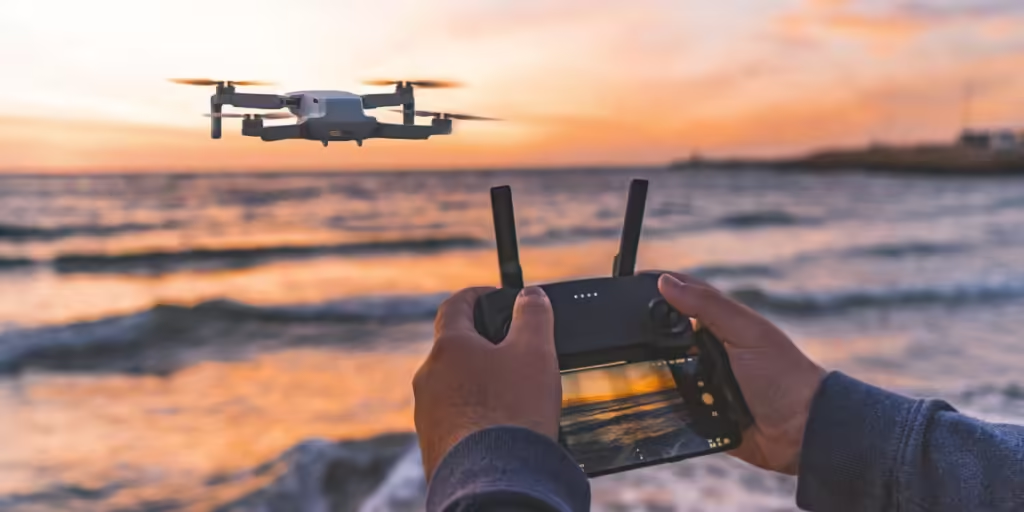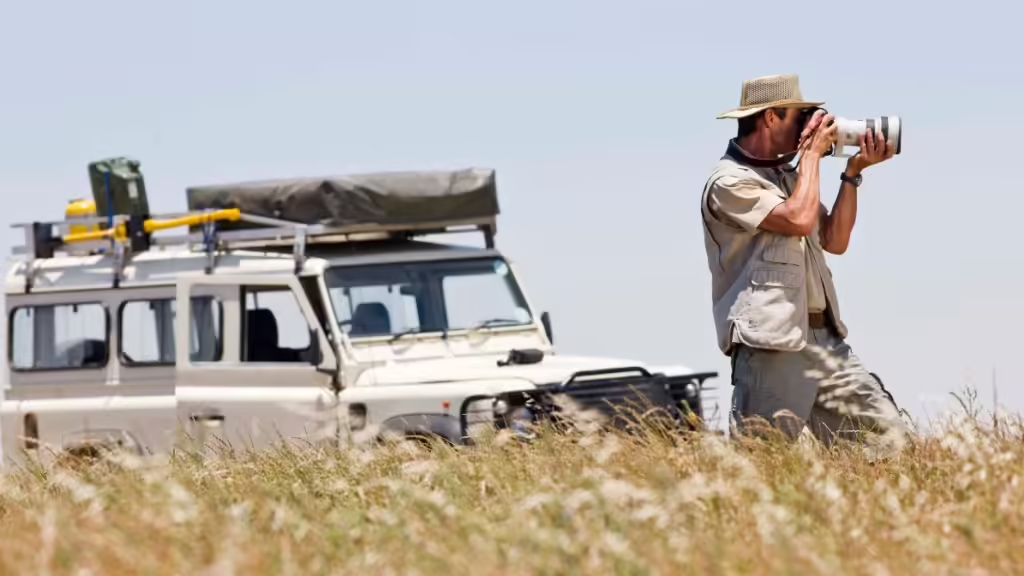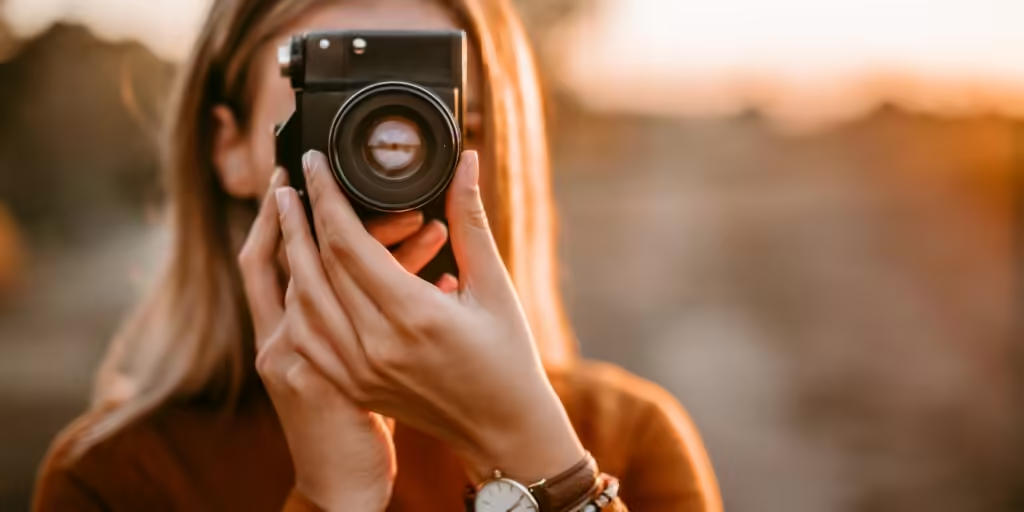If you’re planning a photography safari in Namibia, having the right photography gear is essential. From the rugged landscapes of the Namib Desert to the diverse wildlife of Etosha National Park, the country offers incredible photo opportunities. But to make the most of your adventure, having the right gear and photography knowledge is essential. In this guide, we’ll walk you through everything you need to ensure your photo safari is a success.
Introduction to Photography Safaris in Namibia

Namibia is a photographer’s dream. The vast, stunning desert landscapes, the rich, golden light at sunrise and sunset, and the abundant wildlife all come together to create the perfect setting for unforgettable shots. Whether you’re interested in some great shots by capturing iconic dunes at Sossusvlei or photographing wildlife like elephants in Etosha, having the right gear can make all the difference.
A photography safari in Namibia is not just about having a camera. It’s about bringing the right tools to handle the challenging environments, ensuring you’re prepared to capture every moment in the best possible light. This guide will help you pack your camera gear efficiently and make the most out of your photography experience.
Essential Camera Equipment
Camera Body
When choosing a camera body for a photography safari in Namibia, it’s important to consider factors like durability, image quality, and versatility. DSLR and mirrorless cameras are both excellent choices, of course, but each has its pros and cons.
DSLRs are great for their battery life, speed, and familiarity to many photographers. They also tend to perform well in low-light conditions.
Mirrorless cameras are smaller, lighter, and offer great image quality. Their compact design can be a major benefit on long drives or hikes, though you may need to carry extra batteries due to their faster power consumption.
Whichever option you choose, make sure it’s weather-sealed to withstand the dust and occasional rain in Namibia’s challenging environments. Additionally, consider whether a full-frame or crop sensor camera better suits your needs, as this will influence your lens selection and the full range and types of shots you can capture.
Lenses and Super Telephoto Lens
The right lenses can elevate the skill level of your safari photography by giving you the flexibility to shoot both wide landscapes and distant wildlife with ease, thanks to the appropriate focal length. Having a supertelephoto lens can significantly enhance your ability to capture detailed images of wildlife from afar.
Telephoto Lenses (70-200mm, 100-400mm): These are essential for wildlife photography, allowing you to capture animals from a distance without disturbing them. A telephoto zoom lens, such as the Sony FE 100-400mm F4.5-5.6 GM OSS, is particularly versatile for photographing animals in motion. To avoid the hassle of having to change lenses frequently in dusty conditions, consider having two camera bodies ready.
Wide-Angle Lenses (16-35mm)—ideal for capturing the sweeping landscapes of Namibia. From the endless dunes of Sossusvlei to the salt pans of Etosha, a wide-angle lens will let you capture the grandeur of the scenery.
Prime Lenses (50mm, 85mm): A prime lens with a wide aperture (f/1.8 or f/2.8) is great for low-light conditions, such as early morning or evening safaris, or capturing portraits of wildlife in sharp focus against blurred backgrounds.

Tripods and Stabilization
A sturdy tripod is a must for landscape photography, especially when shooting at sunrise or sunset when the light is softer and you might want a longer exposure. For astro photography, a sturdy tripod is essential to capture clear nighttime images. For wildlife photography, however, a tripod can be cumbersome, so you might want to opt for a monopod or gimbal for more flexibility. These stabilizers provide the support you need while still allowing you to move with the action.
If you’re going to be shooting from a safari vehicle, bean bags or car window mounts are invaluable for steady shots, especially with telephoto lenses.
Camera Bags and Accessories
Your gear is only as safe as the bag it’s carried in. Choose a rugged, waterproof camera bag with multiple padded compartments to protect your camera body, lenses, and accessories. Neutral density filters can also be useful in various photography conditions. In addition, pack:
Lens cleaning kits and microfiber cloths to keep your gear free from dust and smudges.
Dust blowers to keep the sensor clean, as Namibia’s dry conditions can create a lot of dust.
Rain covers for your camera bag to protect your equipment from unexpected downpours, which are common in certain regions.
Backup and Storage Solutions
Memory Cards and Card Holders
It’s essential to carry multiple high-capacity, high-speed memory cards. A 64GB or 128GB card will give you plenty of space to shoot thousands of images without worrying about running out of space. Be sure to carry at least 2-3 spare cards and keep them in a secure card holder to avoid loss or damage.
Portable Hard Drives and Cloud Backup
With all the photos you’ll be taking, storing your images securely is a priority. Consider bringing a portable SSD to back up your photos as you go. These drives are compact, durable, and fast, making them perfect for traveling photographers. Additionally, look into cloud backup services to store your images remotely, ensuring peace of mind in case your physical storage gets lost or damaged.
Extra Batteries and Charging Gear
You’ll be using your camera frequently, so extra batteries are a must. You might only have a few seconds to capture an amazing moment, so being prepared is crucial. Temperatures can vary in Namibia, and battery life may be shorter in colder mornings and hot afternoons. Carry at least 3-4 batteries for your camera.
Since power outlets can be scarce, especially in remote safari camps, consider bringing a solar charger or power bank to recharge your devices on the go. If you’re staying in a lodge, inquire about charging options in advance.
Drone Photography Essentials (Where Permitted)

Drone and Accessories
A drone can add an entirely new dimension to your photography safari. The DJI Mavic Air 2 or DJI Mini 3 are both excellent choices due to their compact size, impressive image quality, and ease of use. These drones will allow you to capture aerial shots of Namibia’s dramatic landscapes, wildlife, and even the vast, ever-shifting dunes of the Namib Desert.
Legal and Safety Considerations
It’s important to know the rules and regulations regarding drone use in Namibia. National parks and wildlife reserves have strict drone regulations to protect wildlife and maintain safety. Always check if a drone permit is required in your area, and respect the guidelines set by local authorities.
Additional Accessories for Enhanced Photography

Polarizing and Neutral Density Filters
Filters are an essential tool for improving the quality of your photos. A polarizing filter will help reduce glare from the sun reflecting off water and sand, while an ND (neutral density) filter allows you to capture smooth, long-exposure shots of flowing water or dunes with soft, silky motion. Neutral density filters are particularly useful in various photography conditions, even though some photographers have not personally utilized them in Africa.
Rain Covers and Lens Hoods
A rain cover will protect your gear in case of unexpected downpours. The desert weather can change quickly, so being prepared with a cover can save your photography equipment from from damage. A lens hood is also important for preventing lens flares and protecting your lens from dust.
Bean Bags and Window Mounts for Vehicles
If you plan on shooting from a safari vehicle, bean bags are essential for stabilizing your camera, especially when using long lenses. Window mounts are another great beanbag option, providing a secure place for your camera and allowing for quick shots without the worry of handshakes.
Clothing and Personal Gear for Photographers

Appropriate Clothing
Dressing appropriately can make your safari experience much more comfortable. Opt for lightweight, breathable clothing that can handle the hot afternoons and cool mornings. Neutral colors like beige, brown, and khaki are recommended, as they help you blend in with the environment and won’t startle wildlife.
Sun Protection
The sun in Namibia can be intense. Be sure to wear a wide-brimmed hat, sunglasses, and sunscreen with high SPF to protect yourself from harmful UV rays. It’s also wise to bring lip balm with SPF to protect your lips from the dry, hot air.
Waterproof Boots and Dust Protection
Comfortable, durable waterproof boots will keep your feet protected, especially during dry season if you’re doing any walking safaris. A scarf or buff is also helpful for keeping dust out of your mouth and nose during vehicle safaris.
Insect Repellent and First Aid
Though Namibia isn’t known for heavy mosquito populations, you should still pack insect repellent for your trip. Also, bring a basic first aid kit, including essentials like pain relievers, antiseptics, and plasters for any minor cuts or blisters.
Practical Tips for a Successful Photography Safari in Namibia

Planning the Best Times for Photography
The best light for photography is during the golden hours—shortly after sunrise and just before sunset. Astro photography, which involves capturing nighttime images, also benefits from specific times and conditions. During these times, the light is soft, warm, and ideal for both wildlife and landscape shots. The night and early morning hours also provide the best chance to capture wildlife at their most active.
Ethical Wildlife Photography
While it’s tempting to get up close to Namibia’s fascinating animals, always prioritize their well-being. Never disturb animals in their natural habitats, and avoid getting too close to them. Keep a safe distance and respect the local wildlife guidelines.
Working with Guides for Optimal Shots
Experienced safari guides are invaluable in helping you find the best locations for photography. They know the rhythms of the animals and the best times to be in specific areas. They also have expert knowledge of how to get your vehicle positioned for the best shots without disturbing the wildlife.
Conclusion
A photography safari in Namibia is a once-in-a-lifetime opportunity to capture stunning pictures of landscapes, wildlife, and natural beauty. By packing the right gear and following these tips, you’ll be well-prepared for your adventure. With careful planning and the right equipment, you’ll leave with memories—and photographs—that will last a lifetime. Happy shooting!


